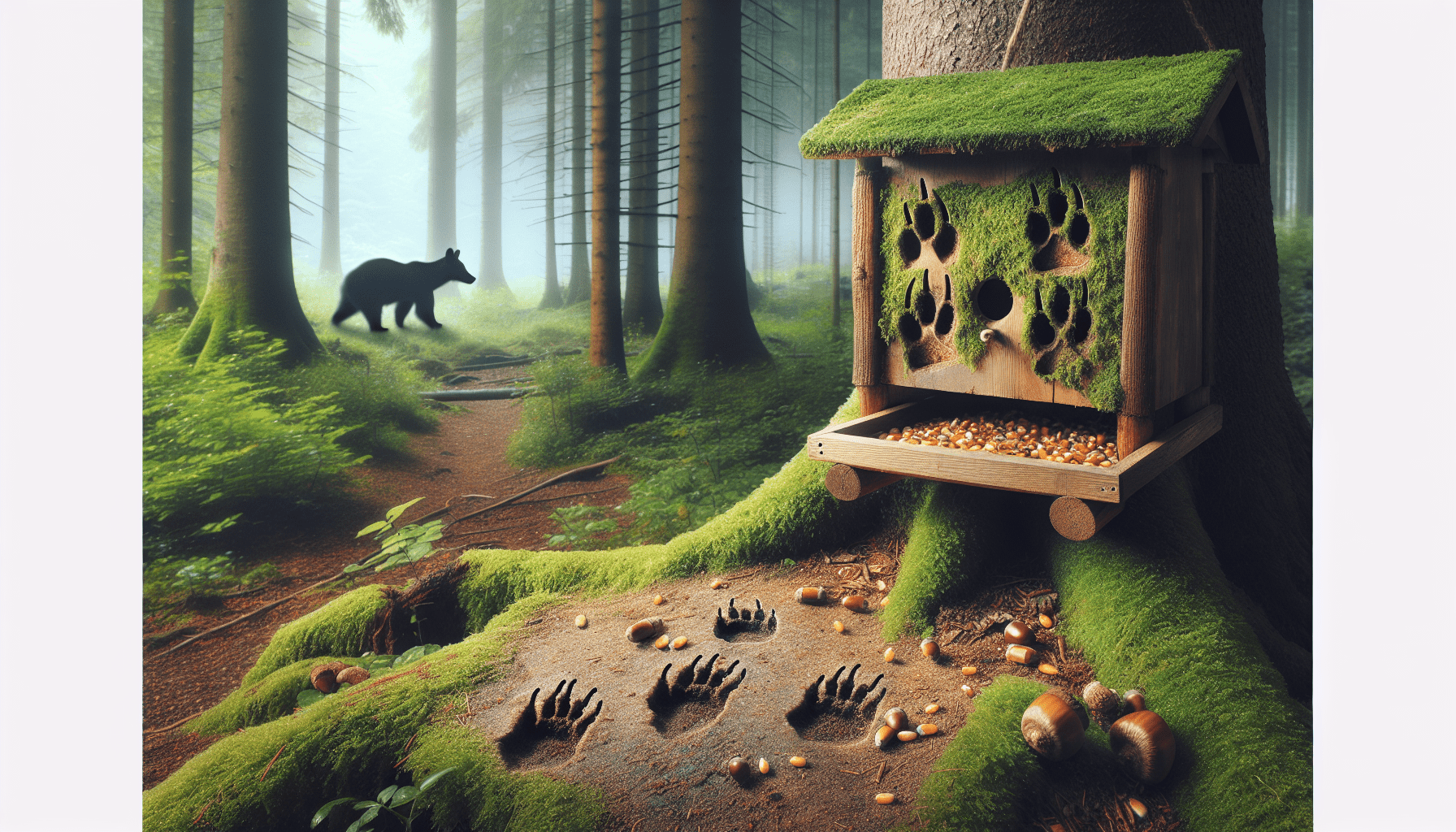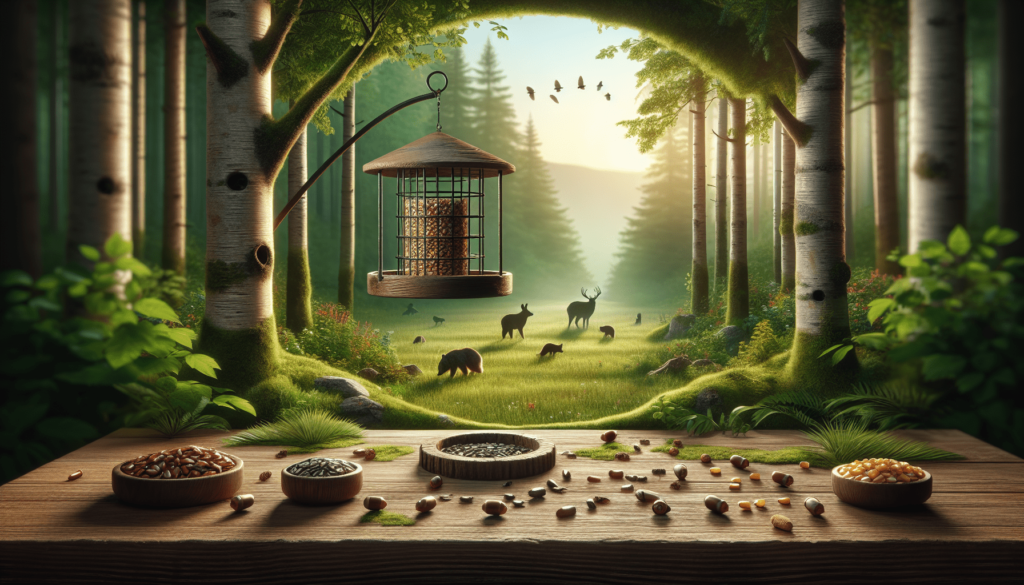
What measures do you take to keep your deer feeder safe from unwanted visitors? If you’re an outdoor enthusiast or a hunter, chances are you’ve encountered some pesky critters that see your deer feeder as an all-you-can-eat buffet. Bears, raccoons, and other animals can wreak havoc on your setup and reduce your chances of attracting deer for a satisfying hunt. Let’s look at how you can safeguard your deer feeder effectively.
Understanding the Threats
Before you can efficiently protect your deer feeder, you need to understand who your main adversaries are. Knowledge is power, especially when it comes to the great outdoors!
Bears
Bears pose one of the most significant threats to deer feeders, especially in regions where they roam freely. Not only are they strong, but they’re also incredibly determined. A bear can easily tip over or break a standard feeder if they catch the scent of the feed. They tend to have a keen sense of smell, which means any food source left unprotected is fair game.
Tips for Bear-Proofing Your Feeder
-
Location Matters: Place your feeder at a distance away from natural food sources that attract bears, such as berry bushes. If bears have to walk a bit to reach your feeder, they might think twice about making the trek.
-
Height Adjustment: Elevating your feeder at least 5 to 6 feet off the ground can help deter bears. They can climb, but this additional height makes it a bit more challenging.
-
Secure Your Feed: Use metal or bear-resistant containers to store feed. Just because it’s out of reach doesn’t mean bears won’t try to get to it. It’s essential to choose materials that withstand bear attacks.
Raccoons
Raccoons are clever little creatures that can manipulate even the most secure setups. These furry bandits may look cute, but they can dismantle feeders with ease.
Tips for Raccoon-Proofing Your Feeder
-
Use a Baffle: A baffle is a barrier that prevents raccoons from climbing up to the feeder. Installing a cone-shaped baffle can stop them in their tracks, making it more difficult for them to get to the feed.
-
Timing Matters: Raccoons are nocturnal, so if you adjust your feeding times, you might avoid attracting them altogether. Consider only putting out feed in the early morning or later in the day when they’re less active.
-
Secure the Base: Make sure your feeder has a solid and secure base so it can’t be tipped over. Use screws or bolts to fasten it to the ground if necessary.
Birds and Other Animals
While birds are often welcome visitors, they can dominate feeders and drive deer away. Additionally, other small animals, such as squirrels or opossums, may take an interest in your feeder.
Tips for Managing Bird and Small Animal Traffic
-
Mixed Feed: Use a feed blend that’s less appealing to unwanted birds and small animals. This will help ensure that what you put out mainly attracts deer.
-
Feeder Design: Choose feeders designed specifically for deer. Some feeders have mechanisms that only allow specific animals to access the food—this can also limit bird activity.
-
Limit Access: If small animals can’t reach your feeder, they’ll find alternative food sources nearby. Elevate the feeder and consider adding barriers to make accessing it more challenging for them.
Setting Up Your Deer Feeder
Setting up your deer feeder in the right way can make all the difference in attracting deer while keeping them protected from other animals. Here are some best practices for a successful deer feeder setup.
Choose the Right Feeder
When selecting a deer feeder, consider the following factors:
- Material Durability: Metal feeders are often more durable and secure compared to plastic. They can better withstand animal attacks.
- Size Matters: A larger feeder can store more feed, reducing the need for frequent refills. However, ensure it isn’t so heavy that it requires excessive lifting to refill.
- Functionality: Some feeders come with features like timers or automatic feeding mechanisms, which can help you control the feeding schedule more effectively.
Ideal Location for Your Feeder
The ideal location plays a significant role in keeping your feeder safe and ensuring deer feel comfortable approaching. Here are factors that influence the perfect spot:
- Avoid High Traffic Areas: Keep your feeder away from areas with high predator traffic—these could be trails used by bears or other large animals.
- Natural Cover: Position your feeder near natural cover, like bushes or trees. This provides deer a sense of security while approaching to eat.
- Terrain Consideration: Assess the terrain to avoid placing your feeder in areas prone to flooding or other weather-related impacts that could damage it.

Maintenance Strategies
Protecting your deer feeder isn’t a one-time effort; it requires ongoing maintenance and monitoring. Here are some strategies you can use:
Regular Inspection
conduct regular inspections of your feeder to ensure it remains in good condition. Look for signs of wear and tear, and make timely repairs.
Checklist for Inspections
| Item to Inspect | Frequency | Notes |
|---|---|---|
| Feeder stability | Weekly | Check for tipping/looseness |
| Feed quality | Bi-weekly | Replace spoiled feed |
| Secure attachments | Monthly | Tighten screws/bolts |
| Baffle functionality | Monthly | Ensure it remains intact |
Cleaning Your Feeder
Just like any other tool or equipment you own, cleanliness matters. A dirty feeder can encourage mold growth and attract unwanted pests.
Cleaning Steps
- Disassemble the Feeder: Remove all the feed and take apart any detachable components.
- Scrub Down: Use a mild soap and warm water solution to scrub the insides. Avoid chemicals that could contaminate the feed.
- Rinse Thoroughly: Ensure that all soap is rinsed off to avoid residues that could harm the deer.
- Dry Properly: Allow everything to air dry completely before reassembling, to prevent moisture build-up.
Using Technology for Protection
In today’s age, technology can be a game-changer for protecting your deer feeder. Different products can help you monitor activity and deter unwanted animals.
Motion-Sensor Cameras
Installing a motion-activated camera can provide insight into what animals are visiting your feeder. This way, you can adjust your feeding practices based on what you observe.
- Advantages: You’ll get live feedback on how frequently bears, raccoons, or other animals visit, enabling better strategy planning.
- Tips for use: Place the camera at a distance that doesn’t disturb the animals but allows for a clear view of the feeder.
Automatic Feeders
Automated systems can help minimize human presence and maintain a more consistent feeding schedule.
- Time Control: You can set feeding times to reduce attraction during peak nighttime for raccoons, allowing deer a more serene dining experience during daylight hours.
- Scent Control: By limiting how often you approach the feeder, you’ll help to minimize your scent trail, maintaining a more neutral environment for deer.

Additional Tips and Tricks
While the key strategies should provide a robust shield against thieves of the wild, sometimes additional creative measures can offer extra layers of protection.
Scent Management
Use scent to mask human presence. Employ scents like deer estrus or natural deer feed scents to lure deer while covering your own tracks.
Offer Alternatives
By offering alternate feeding options—like corn in different locations—you can split attention amongst more feed sources, reducing pressure on your main feeder.
Seasonal Awareness
Adapt your strategies according to seasons. In early summer, bears may be more active due to food scarcity, while raccoons might emerge more in the fall. Tailoring your protection to seasonal behaviors can help safeguard your feeder more effectively.
Conclusion
Protecting your deer feeder from bears, raccoons, and other animals may require a bit of effort and creativity, but the rewards are worth it. By understanding the risks and implementing various strategies—from optimal feeder selection to maintenance and technology use—you can create an inviting space for deer while keeping the unwanted guests at bay.
Remember that each outdoor situation is unique, and sometimes, a little trial and error will help you perfect your approach. So, what steps will you take today to make your deer feeding experience more rewarding and less stressful? Whether you’re a seasoned pro or just starting, there’s always room for improvement, and the great outdoor adventures await!





